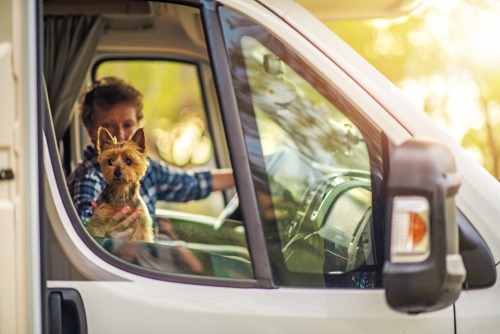
Senior Drivers With Pets in the Car at High Risk for Accidents
Senior Drivers With Pets in the Car at High Risk for Accidents
Researchers at the University of Alabama-Birmingham found that senior drivers who travel with pets are more likely to be involved in car accidents.
The study found that the risk of motor vehicle accident doubled when the driver regularly took a pet in the car. For drivers who sometimes or rarely drive with pets, the rate of accidents was approximately the same as drivers without pets.
More than half of the seniors studied acknowledged taking their pet with them in the car at least occasionally.
“this is the first study to evaluate the presence of pets in a vehicle as a potential internal distraction for elderly drivers,” said senior study author Gerald McGwin, a professor of epidemiology, ophthalmology, and surgery. “The increased crash rate for elderly drivers who always drive with pets is important in the context of increasing driver awareness about potentially dangerous driving habits.”
The study looked at 2,000 licensed drivers age 70 and older, including approximately 700 who traveled with pets in the car. The study was published in Accident Analysis and Prevention in May 2013.
“There is no direct evidence that driving with pets is or is not a threat to public safety,” McGwin said. “However, indirect evidence exists based on distracted-driving research on texting, eating, or interacting with electronics or other passengers. And there are certainly anecdotal reports in the news media of crashes and even fatalities caused by drivers distracted by a pet in the vehicle.”
A 2010 survey by AAA found that approximately 56 percent of drivers have driven with a dog in the car at least once a month in the past year, and 20 percent of respondents admitted to letting the dog sit on his or her lap while driving.
Distracting behaviors are commonplace when the family pet is riding in the car. In the AAA survey, 52 percent admit to petting their dog while driving, 23 percent have used their hands and arms to keep the dog in place while braking, and 19 percent have used their hands and arms to keep the dog from climbing into the front seat. Reaching in to the back seat to interact with the dog, allowing the dog to sit in his or her lap, giving the dog food or treats, and taking a photo all significantly increase the risk of crash.
Only 16 percent of survey respondents use a pet restraint while traveling with a dog in the car, even though 83 percent of respondents acknowledged that an unrestrained dog can be dangerous in the car.
“Drivers should use a pet restraint system for your dog every time their pet is in the vehicle,” said Jennifer Huebner-Davidson, AAA National, Traffic Safety Programs manager. “A restraint like those offered by Kurgo will not only limit distractions, but also protect you, your pet and other passengers in the event of a crash or sudden stop.”
Increased awareness can go a long way toward protecting drivers and pets brought into the car. Nearly 40 percent of survey respondents admitted they had never considered putting their dog in a restraint system while driving; however, drivers who have heard of situations when unrestrained dogs caused injury or were injured during a car crash were three times more likely to restrain dogs during transit.


















